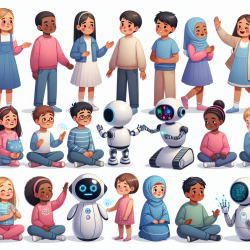Introduction
As technology advances, so does its potential to impact various aspects of our lives, including mental health care. In recent years, socially assistive robots (SARs) have emerged as a novel intervention aimed at supporting children's mental health. However, the effectiveness of these robots in reducing stress among children remains under scrutiny. A recent study titled Evaluating the Role of a Socially Assistive Robot in Children’s Mental Health Care sheds light on this topic, offering valuable insights for practitioners and researchers alike.
The Study: A Closer Look
The study explored the potential stress-buffering effects of SARs on children aged 7 to 10 years old. Conducted with a sample of 70 children, the research aimed to determine whether the presence of a SAR during a stressful task could alleviate stress-related symptoms. Contrary to initial predictions, the study found no significant stress-buffering effect from the SAR. Instead, the presence of the robot was associated with a larger decrease in positive affect following the task.
Key Findings and Implications
- The SAR did not significantly reduce stress levels in children during the stressful task.
- Children with higher levels of social anxiety exhibited more prosocial behaviors towards the SAR, indicating a potential target for future interventions.
- The study highlights the need for further research to optimize the timing and specifications of SAR interventions to maximize their potential benefits.
What This Means for Practitioners
For practitioners working with children, these findings underscore the importance of evidence-based interventions. While SARs hold promise, their current implementation in stress reduction may not be as effective as anticipated. Practitioners should remain cautious and continue to rely on proven therapeutic methods while staying informed about ongoing research in this area.
Encouraging Further Research
The study's results highlight the necessity for further exploration into the use of SARs in children's mental health care. Researchers are encouraged to investigate different types of SARs, optimal intervention timing, and specific robotic features that may enhance their effectiveness. Additionally, expanding research to diverse populations can provide a more comprehensive understanding of SARs' potential benefits.
Conclusion
While the current study did not find significant stress-buffering effects of SARs, it opens the door for future research to refine and optimize these interventions. Practitioners and researchers alike should remain committed to data-driven decisions and continue to explore innovative solutions for improving children's mental health outcomes.
To read the original research paper, please follow this link: Evaluating the Role of a Socially Assistive Robot in Children’s Mental Health Care.










